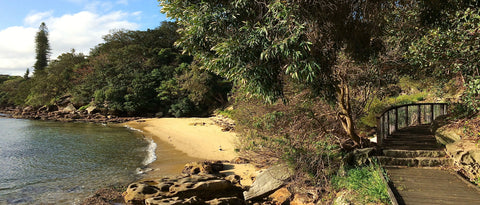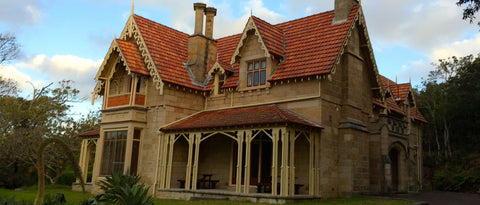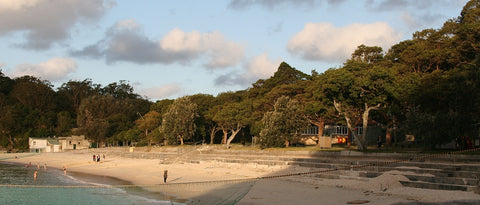Enjoy the Beach Life Australia just as much in winter!
What makes a good Winter or early Spring Beach?
That is, if you are like us, and not brave enough to step into 18 degree water with only 16 degrees outside, but absolutely love the Beach Life Australia nevertheless.
We know how awesome these beaches are for swimming but this time our criteria is as follows:
- Scenic Walk to enjoy the environment, a bit of history and the sunshine
- Playground/ space for kids to run around and make some friends
- Brilliant Cafe to relax in afterwards or great picnic/ BBQ area
Over the next few weeks we will be showcasing the best Beaches Sydney has to offer despite the cold weather.
Everyone knows how important it is to get some sunshine to produce Vitamin D, a vital tool that helps with calcium absorption and building strong bones, not to even mention the increase in endorphins.
Generally natural environments like beaches and waterfront parks offer more restorative benefits to people than gyms, entertainment venues and the built urban environment.
Therefore get out and enjoy, the beach and the sun make us certainly happy and relaxed!
Despite the cold temperatures never forget to add some good quality sunscreen or on warm winter days spend some time in the shade.
In our other related Blogs we covered #1 Palm Beach and #3 Bondi Beach
The 3 best Winter/ Spring Beaches in Sydney - Palm Beach
The 3 best Winter/ Spring Beaches in Sydney - Bondi Beach
A beautiful Harbor beach, stunning walk featuring harbour bridge and city views and a gorgeous park
This week we feature one of our favorites and less well known Winter Beaches, Nielsen Bay in Sydney Harbor, with the most incredible Harbour side walk – the Hermitage Foreshore walk.

Nielsen Park, adjacent to the beach is a great grassy park with Moreton Bay Fig lined boulevards.
How to get to Nielsen Bay
Address: Greycliffe Avenue, Vaucluse NSW 2024
The carpark at Greycliffe Avenue is relatively large, however on a nice day it does fill up quickly. You might have to park along Coolong Road which Greycliffe Avenue turns into instead.
Take Bus 325 from Circular Quay to Vaucluse Rd near Greycliffe Av, Vaucluse (about 40 min bus ride).
Use the Sydney Transport Trip Planner
How to get to the Rose Bay end of the Hermitage Foreshore Walk
Park in Bayview Hill Road or Tivoli Avenue (Rose Bay), at the start of the Hermitage walk.
Take the 325 or 324 to Kincoppal - Rose Bay School of the Sacred Heart, Vaucluse and walk down Bayview Hill.
Use the Sydney Transport Trip Planner
This most incredible walk will take you along the harbour foreshore, by the most beautiful beaches with stunning harbor bridge and city views.
The walk is part of the Sydney Harbour National Park and has recently been updated to a boardwalk in some places, however some sections remain which are not suitable for prams and wheelchairs. Generally the walk is not too demanding, apart from a few steps and suitable for kids.
The walk takes place on land once part of the 240 hectare Vaucluse estate of the Wentworth family. The fact that this splendid walk is not in private hands is largely the result of community action. From 1905, a community pressure group, the Harbour Foreshores Vigilance Committee, lobbied governments about the loss of harbourside land to private ownership. Consequently, the government purchased this strip of foreshore in 1912, a year after Nielsen Park had also been purchased for public use.
Start on either the Bayview Hill Road entry in Rose Bay or on the other end at Nielsen Park.
When starting from Nielsen Park, take the steps at the western side of the beach up the hill, continue on the asphalt for about 100 metres and then turn right down some steps to the Hermitage Foreshore Walk.
From Rose Bay/ Bayview Hill Road, walk west to the dead end of Bayview Hill Road into the bush, where a sign will welcome you to the walk.
You will cover the following sites and distances (starting in Rose Bay):
Above the start of the walk you would have noticed the Kincopaal/ Sacred Heart Convent school with their John Horbury Hunt heritage looming from above like a castle. The chapel, completed in 1900, was one of the architect’s masterpieces.
The original building, leased in 1882 and later purchased by the Society of the Sacred Heart, was a private home, built in 1851. The first permanent school building, completed in 1888, was the five level central facade. Buildings were gradually added to meet the needs of school, community and novitiate. Established in 1883 through the amalgamation of the Convent of the Sacred Heart and Kincoppal, today the school is non-selective, with a coeducational primary school and a girls only high school, catering for approximately 900 students from Kindergarden to Year 12, including about 150 boarders.
Keep walking on the marked footpath till you hit the first significant break in the rocky foreshore. The small but very pretty beach is Queens Beach and by now you would have also noticed the most stunning views to Shark Island, the City, the Harbour Bridge and the Opera House. On your right you can admire some very fine homes, the area is one of the most expensive locations in Australia. Luckily the foreshore was preserved for the public so you can also experience this amazing location and the views.

Continue to Hermit Point, the reserve widens around the headland onto Hermit Bay with a grassy area, picnic tables, boat ramp and a little wharf.

Once beyond and above the beach, look back to the houses now on the opposite side, and especially the many rustic Gothic gables of The Hermitage.

This house gave the walk and the little bay, their names. It began as a smaller cottage built by Alexander Dick around 1837 and later occupied by Edward Mason Hunt (who may have been the ʺhermitʺ) who had the house built out of Sandstone in 1878.
It was partially destroyed by fire in 1936, but was carefully reconstructed and enhanced by architect Emil Sodersten, with steeply pitched gables, a three storey castellated tower and elaborately decorated barge boards and balconies. Used as a bank training college in the 1960s, it is again privately owned.

Soon after, the narrow strip of foreshore walk reaches a large, cleared area with a great white house at the head of the lawns, its grand, bowed entrance facing the Harbour.
Carrara (named after the Italian marble used in it, and later called Strickland House) was built on a portion of the Wentworth estate given to William Charles Wentworthʹs daughter, Thomasine, as part of a marriage settlement but sold to Charles Lowe in 1854.
The house, designed by John Frederick Hilly, was sold before its completion in 1856 to John Hosking, Sydneyʹs first elected mayor. Its original two storey coach house and servantsʹ quarters stand nearby. After Hoskingʹs death, Carrara went through several prominent owners.
It was a school and then, after its purchase by the Government in 1914, became Strickland Womenʹs Convalescent Home, opened in 1915 to relieve pressure on general hospitals during WWI. Additional buildings were added to the hospital and the grounds were landscaped again in the 1930s – notice the bowling greens in the gully. The hospital dormitory blocks remain, some distance from the main house. Closure of the hospital in 1989 opened the grounds to the public but also the building to controversy about its future use. Government proposals to lease it as a ʹboutiqueʹ hotel made it the subject of local protest. Meanwhile, the grounds and gardens with their many treasures allow visitors a rare opportunity to experience something of the extent and quality of such a splendid Victorian Marine Villa on the Harbour. And it gets other uses, too, posing in 2007 as – of all things – Darwin’s Government House (which it hardly resembles) for Baz Luhrmannʹs epic film, Australia.

Keep walking on the grassy reserve along the foreshore till you get to Milk Beach. A tiny but immensely beautiful beach with tessellated rock pavement. Walk on the sand to the other side of the beach where the track continues.

Past some incredible viewing points and the steeper and more difficult part of the track you will reach after some steps an asphalt road.
To your left, Steele Point, with Steele Point cottage perched on the edge of a sandstone cliff. Built in the 1880s as a gunner's barracks to protect Sydney Harbour, the cottage has been restored to now offer secluded heritage accommodation.
The barracks originally held three 80 pounder rifled muzzle‐loaders (RMLs), replaced in the 1890s with 5 inch breech‐loading guns. The guns were removed by 1910 but during WWII, the Nielsen Park area was used as an anti‐aircraft base with temporary wooden barracks, searchlights and anti‐aircraft guns.
From Steel Point follow the signs towards the National Parks District Headquarters, the romantically steep‐pitched rustic Gothic and gabled Greycliffe House. Completed in 1862, it is set in idyllic bushland overlooking Shark Beach. Its design, like neighbouring Carrara, is attributed to John Frederick Hilly, and it too was a William Charles Wentworth wedding gift, this time for daughter Fanny and her husband John Reeve, a Gippsland grazier. They probably never lived there and Greycliffe was leased as a home by Joseph Scaife Willis (1808‐97), a merchant and businessman. It was also owned for a few years by Sir John Robertson, Premier of NSW. The Foreshores Resumption Scheme acquired it in 1911 and the grounds of the house were opened to public use. The house became, in 1913, the Lady Edeline Hospital for Babies. Its main purpose was to care for infants suffering from gastroenteritis. From 1934 until 1968, Greycliffe was a Tresillian Mothercraft Home, providing support for new mothers. It is now the Sydney District National Parks Office and visitors are welcome to visit the ground floor, Monday to Friday.

As Nielsen Park is entered, coastal bushland replaces introduced species in one of the finest of all harbourside parks Nielsen Park was named in 1912 for Niels Rasmus Wilson Nielsen (1869‐ 1930), Copenhagen‐born Labor Minister for Lands in NSW, 1910‐1911. A dedicated and sincere socialist, Nielsen re‐ acquired harbourside land for public use under his Foreshores Resumption Scheme – Taronga Park and Nielsen Park being his most important successes.
Subsequent to becoming a part of the public domain, Nielsen Park received additional features, such as the unique sea wall, classic bathing sheds and the kiosk. The Park was incorporated into Sydney Harbour National Park when it was created in 1975, and the Hermitage Foreshore was added in 1984.

From the house it is easy to walk down through the pleasant grounds to the ominously named Shark Beach, possibly passing the interesting ‘Roman’ seat memorial to Nielsen and to Albert Notting (1862‐1928), a businessman from Summer Hill whose efforts as Secretary of the Harbour Foreshores Vigilance Committee contributed greatly to the creation of this park.

To get to a great picnic spot overlooking Nielsen Bay, take the steps uphill past the womenʹs shed on the eastern end of the beach and join a grassy path towards Bottle and Glass Point. There are fine city and Greycliffe views back from the clifftops, with more Sydney Harbour National Park and Harbour Trust parkland across the harbour at Clifton Gardens and Georges and Middle Heads.
If a picnic is not for you, you have the option of either visiting the casual Kiosk/ take away area for some snacks or the Nielsen Park Café and Restaurant. Both are housed at a gorgeous heritage sandstone and timber building overlooking Nielsen Bay dating back to 1914.

The Nielsen Park Café and Restaurant offers modern Australian cuisine and the venue is fully licensed for that glass of wine after the walk.
Bring some sand toys and a ball and let your kids run wild on the relatively enclosed beach area.
No Playground for kids however the beach and surrounding park is the best playground there is!
The 3 best Winter/ Spring Beaches in Sydney - Palm Beach
The 3 best Winter/ Spring Beaches in Sydney - Bondi Beach
Comments will be approved before showing up.